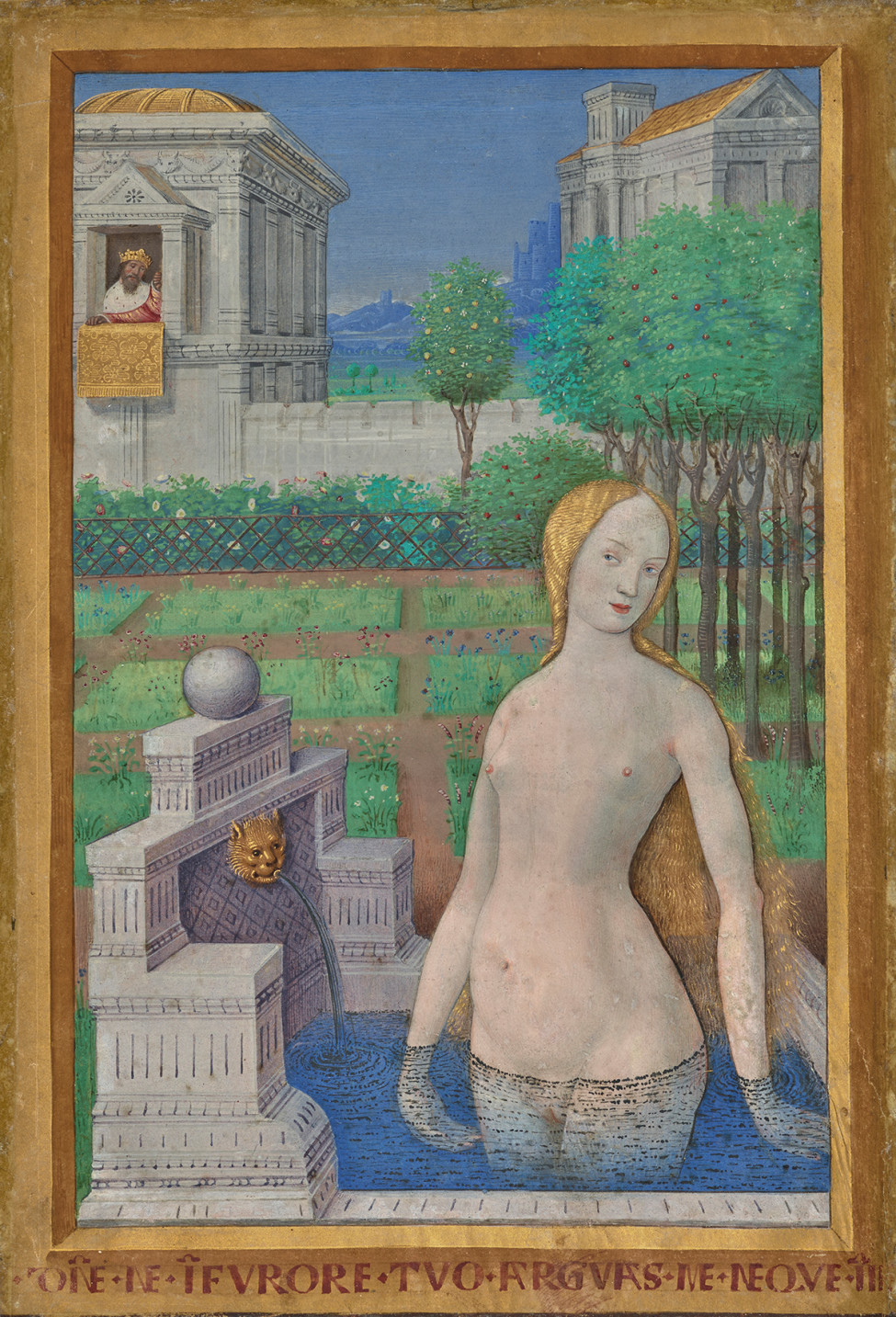DESNUDOS en el arte y en FACEBOOK
Why nudes are allowed in galleries but not on Facebook
By Jill Burke
From the Spring 2019 issue of RA Magazine, issued quarterly to Friends of the RA.
In August 2017, I posted a selection of potential covers for my new book, The Italian Renaissance Nude, on Facebook, to find out which one friends liked best. In what’s now become a familiar tale for art historians, my post fell foul of Facebook’s automised censors, and had to be “checked for sexual content” before it was allowed to appear.
This seems a very modern problem but actually raises questions at the heart of the exhibition The Renaissance Nude at the Royal Academy. It is remarkable that one of the few places where we can gaze at images of the naked body in public with impunity is the art gallery. How did this situation come about? This exhibition considers how the nude became fundamental to the development of Western visual culture from the 15th century onwards, and shows how new notions about art, religion and the body provided a context in which images of the naked body could become socially and culturally acceptable.
One example from the show is the panel Saint Sebastian from around 1502, by Cima da Conegliano, which was originally the left wing of an altarpiece for a church in Mestre, near Venice. In it we see a young man with lustrous hair standing in the middle of a landscape. His hands tied behind his back and his genitals swathed with a white cloth, he appears entirely unperturbed by the arrow piercing his right thigh. In many ways, this painting encapsulates what you might expect from a Renaissance nude: the saint’s body has the elegant contours of a slender Greek god. In fact, the renowned German painter Albrecht Dürer, whose works pepper the exhibition, argued that artists should absolutely use “the most beautiful human shape”, which the ancients had used for their “false gods”, for the body of Christ and the saints. He practised what he preached in his influential engraving, Adam and Eve, of 1504, in which the naked Adam is modelled on a famous antique sculpture of Apollo, discovered in Rome about 15 years earlier. Indeed, the idea that an enthusiasm for classical antiquity spurred Renaissance artists to revive the nude form is certainly true, and has its place in the exhibition. However, it is far from the full story, which is more complex and interesting.
We can learn more by considering what Cima’s painting was intended for. It was not commissioned simply for aesthetic enjoyment, but for religious contemplation and as a fitting backdrop to the ceremony of the Mass. Sebastian was a plague saint. In a period where outbreaks of contagious disease were common, resulting in sudden and painful death, the beautiful body of Sebastian gave desperate people a focus for their prayers for salvation, and a model for the patient acceptance of pain. Cima da Conegliano, Saint Sebastian, 1500-02.
Cima da Conegliano, Saint Sebastian, 1500-02.
-
The nude became fundamental to the development of Western visual culture from the 15th century onwards, and shows how new notions about art, religion and the body provided a context in which images of the naked body could become socially and culturally acceptable.
 Jean Bourdichon, Bathsheba Bathing, Hours of Louis XII, 1498/99.
Jean Bourdichon, Bathsheba Bathing, Hours of Louis XII, 1498/99.
In a Christian context, nakedness could signal humility and truthfulness rather than eroticism. But there is also evidence that some audiences might have found erotic enjoyment in this type of image – around 15 years after Cima’s panel was painted, a Saint Sebastian by Fra Bartolomeo had to be removed from a church in Florence because the female parishioners had “evil thoughts” about it, according to the Renaissance chronicler, Giorgio Vasari. Images of the naked body are often complex in the way they might provoke a reaction in the viewer, and there are many examples of religious images in the exhibition – such as miniatures of the naked bathing Bathsheba in the French Books of Hours popular from the early 15th century – that were most likely intended to be erotic despite their religious subject matter.
Although the nude form is often associated with the Italian Renaissance – and especially with Michelangelo, Titian and Leonardo, all of whom are represented in the show – visitors might be surprised at the number of images and objects from elsewhere in Europe. In fact, the nude form became popular around 1400 in diverse contexts. Female nudes, in particular, were represented in Northern Europe much more frequently than in Italy before the turn of the 16th century. By around 1500, patrons across continental Europe were starting to demand that artists show proficiency in depicting the nude, responding to a new art theory that suggested the ability to depict the perfected human form was the highest possible achievement in the visual arts, mimicking the pinnacle of God’s creation of Adam and Eve.
It also became a test of the audience’s education. Would they see the skill of the artist in the image, understand the biblical and classical references, or would they have an altogether baser response? In around 1400, the humanist Manuel Chrysoloras argued: “we admire not so much the beauties of the bodies in statues and paintings as the beauty of the mind of their maker.” The exhibition traces how this mental shift was fundamental for the development of Western art, though – as I found out – it remains a step too far for the algorithms of social media.
-
Jill Burke is a Senior Lecturer in the History of Art at the University of Edinburgh.



Comentarios
Publicar un comentario